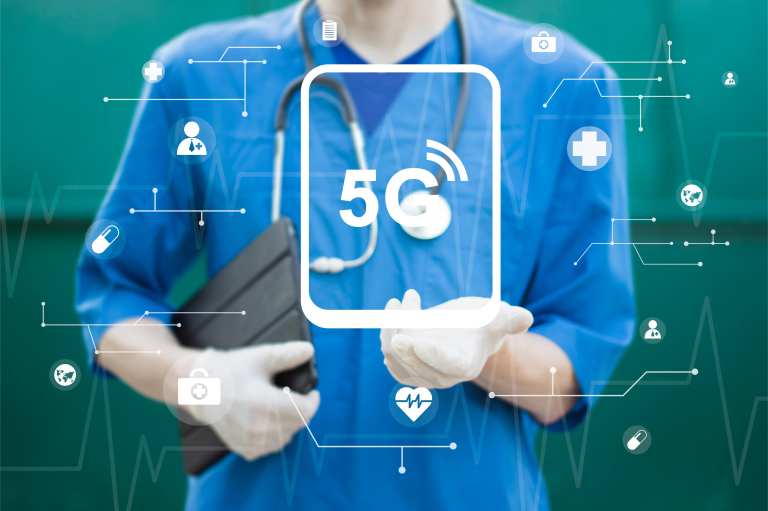
The new 5G mobile network technology has started to make its initial foray into healthcare, and at a time when issues of cost, efficiency and accessibility are gaining even more focus than was the case before. As all that happens, potential use cases for 5G in the healthcare space are taking at least rough shape.
Various deployments might take years to play out, given the bureaucracy and legacy inertia common in the massive healthcare industry. But 5G promises to have an impact in various if not most areas of healthcare — that likely includes payments, though the impact there is likely to be indirect, at least according to information out there now. In general, when it comes to payments and cost, 5G likely will lead to faster data-rich communications among medical service providers, patients and insurance companies — over time, that could lead to better controls on cost.
Patients and Payments
There is a school of thought around healthcare payments that says that getting the patient more involved in care earlier on — that includes making appointments and setting effective reminders for them, and also providing information about costs and payments for procedures — will lead to not only better healthcare, but reduce the amount of medical bills sent to debt collectors for resolution. Mobile technology and improved data analysis via machine learning and other methods will help fuel those improvements.
Indeed, there is increasing focus and activity on tying patients’ smartphones into the healthcare ecosystem — a foreshadowing, perhaps, of what to expect in the new decade, which begins in just a few months. PYMNTS, of course, has documented these recent shifts, and the trends fueling them, through its own original research. As one can imagine, some of the energy behind the move into mobile concerns both cost and efficiency — smartly designed mobile payment programs can ideally reduce overall costs of healthcare and help ensure that medical bills don’t get lost in the shuffle, which in turn benefits healthcare providers and insurers. And 5G will play a big role in all of that.
When it comes to patient involvement, 5G also could help — that’s one of the big expectations about the technology in healthcare. “One of the most impactful ways 5G can optimize administrative needs is in triage, allowing automated tools to communicate with patients in real time,” reads an analysis from FierceHealthcare. “When paired with AI [artificial intelligence] on an online portal, 5G will provide patients with tools to discuss their cause of concern, access information about pre-existing conditions, and even receive treatment recommendations and prescription fills all online, without the need to come in for an appointment.”
Engaged consumers are better consumers, and they tend to show more loyalty to businesses or other operations, including hospitals and other healthcare providers. And that’s also part of the promise of 5G in this industry. “Additionally, real-time communication between healthcare providers, insurance providers, and other third-party organizations will be streamlined along with complete data visibility for decision making,” that analysis continued. “5G will allow for data transfer between multiple parties with exceptional efficiency.”
Rural vs Urban
The emerging 5G mobile network technology also will enable more telemedicine tools, which could especially help patients in rural areas that are facing an increasing shortage of doctors and hospitals. But don’t expect that to happen overnight — in fact, it could take longer than many people would expect. “So far, it appears that 5G’s multi-gigabit speeds and massive capacity will mostly be an urban phenomenon,” according to a recent item in Health Data Management. “Rural areas will get a form of 5G called “low-band” or “sub-6” 5G, which will have less capacity but still have lower latency and be able to work with large networks of industrial sensors.”
Even beyond any rural-urban divide on 5G, the deployment of the technology will present other challenges and opportunities, including in the area of security.
As that analysis stated, “medical identity theft, invasion of health privacy and medical data management will become more challenging as massively increased numbers of devices and greater usage of virtualization and the cloud will mean a broader, more varied cyberattack surface.” Indeed, 5G will also be part of the emerging Internet of Things (IoT) ecosystem, and as PYMNTS research has documented, security is a significant issue all around the IoT world. But that means business, too. According to that research, the global IoT security market is expected to increase by a 35.5 percent CAGR from 2019 to 2026.